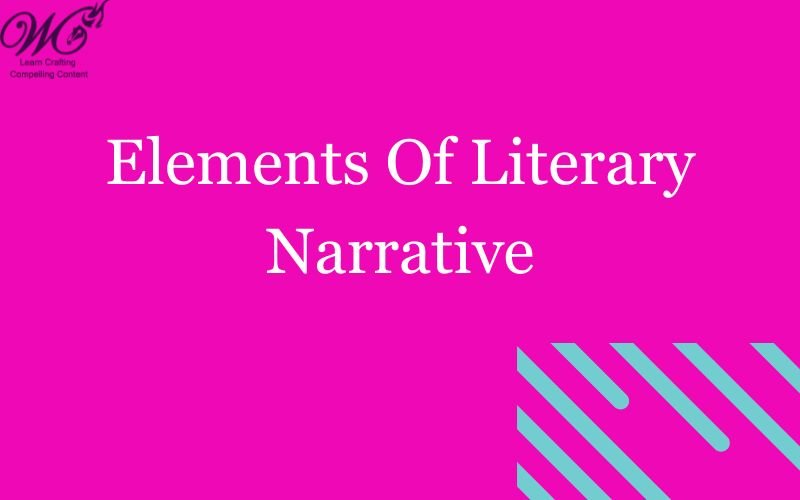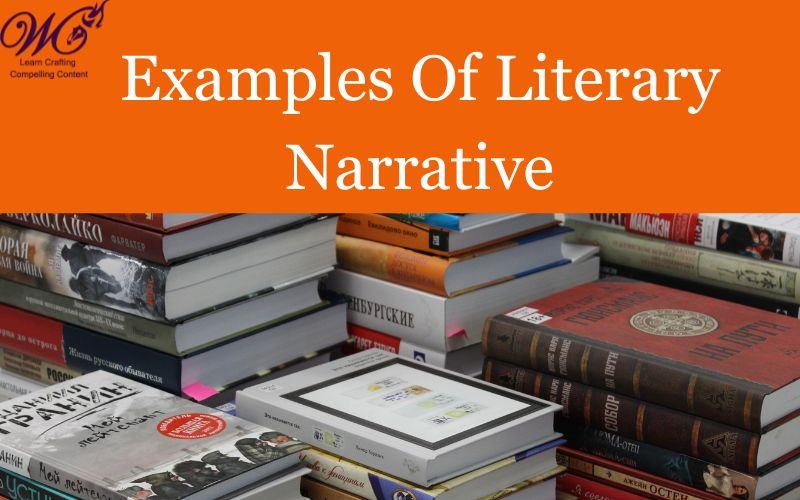In this ultimate writing guide, we unravel the intricate art of literary narrative, exploring its essence, elements, and techniques. Literary narrative, the cornerstone of storytelling, captivates readers through its vivid characters, compelling plots, and rich tapestry of settings.
Join us as we delve into the heart of storytelling, uncovering the secrets behind crafting immersive narratives that resonate deeply with audiences. Whether you’re an aspiring writer or a seasoned wordsmith, prepare to embark on a voyage of discovery through the realms of literary narrative.
Let’s delve deep into the details of literary narrative and learn more about it.
What is a Literary Narrative?
Literary narrative is the essence of storytelling, weaving together intricate plots, vibrant characters, and immersive settings to captivate readers. It transcends mere words on a page, inviting audiences on a journey of imagination and emotion.
From the depths of classic literature to the modern realms of contemporary novels, the literary narrative serves as a timeless vessel for exploring the human experience. It encompasses the art of foreshadowing, the power of symbolism, and the beauty of metaphor, offering writers a canvas upon which to paint their narratives and readers a portal to boundless worlds of wonder.
Why Literary Narratives are Important?
At the heart of literature lies the transformative power of narrative, where stories become more than just words on a page. Literary narratives serve as conduits for human experience, offering readers a window into diverse worlds and perspectives. Through intricate plots, vibrant characters, and evocative settings, these narratives ignite the imagination, provoke thought, and evoke emotion, leaving an indelible mark on those who engage with them.
- Empathy and Understanding
- Escapism and Entertainment
- Reflection and Insight
- Cultural and Historical Context
- Artistic Expression
- Education and Learning
Elements of Literary Narrative:

Character: Characters are the lifeblood of a narrative, embodying its themes, conflicts, and emotions. They breathe life into the story, driving its momentum and engaging readers on a personal level. Through their actions, dialogue, and inner thoughts, characters reveal their complexities, motivations, and transformations, anchoring the narrative in human experience.
Plot: The plot is the skeleton upon which the narrative hangs, guiding the reader through a sequence of events that propel the story forward. It encompasses the rising action, climax, and resolution, weaving together conflicts, twists, and revelations to create tension and suspense. A well-crafted plot captivates readers, keeping them invested in the journey until the very end.
Setting: The setting serves as the backdrop against which the narrative unfolds, shaping the atmosphere, mood, and tone of the story. It encompasses physical locations, time periods, and cultural contexts, grounding the reader in a vividly imagined world. A richly detailed setting not only enhances immersion but also contributes to the thematic depth and resonance of the narrative.
Point of View: Point of view dictates the perspective from which the story is told, influencing how readers perceive events, characters, and themes. It can be first-person, third-person limited, or omniscient, each offering unique advantages in terms of intimacy, immediacy, and narrative control. The choice of point of view shapes the narrative voice and dictates the level of reader engagement and empathy.
Structure of Literary Narrative:
Start:
Introduce your characters and setting, setting the stage for the journey ahead. Hook your audience with a compelling opening line or scene that grabs their attention and piques their curiosity. Lay the groundwork for the conflicts and themes that will drive the narrative forward, setting the tone and establishing the narrative voice.
Middle:
In the middle of your narrative, navigate through the rising action and complexities of your plot. Build tension and suspense as conflicts escalate and characters face challenges and obstacles. Develop subplots and character arcs that add depth and complexity to the story, keeping readers engaged and invested in the outcome. Keep the momentum flowing with well-paced pacing and strategic reveals, leading towards the climactic turning point.
End:
As you approach the end of your narrative, reach the climax of your story with a powerful and satisfying resolution. Resolve conflicts and tie up loose ends, providing closure for your characters and your readers. Deliver a final scene or moment that leaves a lasting impression, offering insight or reflection on the journey that has unfolded. Leave your audience with a sense of fulfillment and resonance, ensuring your narrative lingers in their minds long after they’ve finished reading.
Techniques for Crafting a Literary Narrative
Foreshadowing: Engage your readers by subtly hinting at future events or outcomes, building anticipation and intrigue throughout your narrative. Plant clues and hints early on that will pay off later, creating a sense of cohesion and depth. Use foreshadowing to create tension and suspense, keeping readers guessing and eager to uncover the mysteries lurking beneath the surface.
Symbolism: Infuse your narrative with rich layers of meaning by incorporating symbols that resonate with your themes and characters. Use symbols to convey abstract concepts, emotions, or truths that transcend literal interpretation. Whether it’s a recurring motif, a significant object, or a powerful image, symbolism adds depth and complexity to your story, inviting readers to delve beneath the surface and uncover hidden truths.
Metaphor and Simile: Enrich your prose with vivid imagery and figurative language, painting evocative pictures in the minds of your readers. Harness the power of metaphor and simile to create striking comparisons and associations that illuminate your narrative. Use metaphor to convey complex emotions or ideas through concrete imagery, while simile adds depth and nuance by likening one thing to another. Experiment with different forms of figurative language to find the perfect balance of clarity and lyricism in your writing.
Dialogue: Bring your characters to life through authentic and compelling dialogue that drives the narrative forward and reveals their personalities, motivations, and conflicts. Use dialogue to convey information, advance the plot, and deepen character relationships, capturing the nuances of speech and human interaction. Pay attention to rhythm, tone, and subtext, ensuring that every line of dialogue serves a purpose and resonates with authenticity. Let your characters’ voices shine through, infusing your narrative with vitality and immediacy.
Examples of Literary Narratives:

To Kill a Mockingbird by Harper Lee:
Set in the racially charged atmosphere of the American South during the 1930s, this classic novel follows the journey of young Scout Finch as she navigates the complexities of morality, justice, and prejudice. Through Scout’s innocent perspective, readers witness the trial of Tom Robinson, a black man falsely accused of raping a white woman, and the moral integrity of her father, Atticus Finch, as he defends Robinson despite facing backlash from their community.
The Great Gatsby by F. Scott Fitzgerald:
Against the backdrop of the Roaring Twenties, Fitzgerald’s masterpiece delves into the decadence and disillusionment of the American Dream. Narrated by Nick Carraway, a young man drawn into the glamorous world of the enigmatic Jay Gatsby, the novel explores themes of love, wealth, and the emptiness of materialism. Gatsby’s relentless pursuit of the elusive Daisy Buchanan serves as a poignant commentary on the fleeting nature of happiness and the corrupting influence of ambition.
Beloved by Toni Morrison:
Winner of the Pulitzer Prize for Fiction, Morrison’s haunting novel delves into the legacy of slavery and its enduring impact on African American identity. Set in the aftermath of the Civil War, the story centers on Sethe, a former slave haunted by the ghost of her deceased daughter, Beloved. Through Morrison’s lyrical prose and nonlinear narrative, readers confront the trauma of slavery and its profound psychological toll on individuals and communities.
Conclusion:
In this ultimate writing guide, we’ve navigated through the intricate art of literary narrative, uncovering its essence, elements, and techniques. From its captivating characters and compelling plots to its rich tapestry of settings, the literary narrative serves as the cornerstone of storytelling, inviting readers on immersive journeys of imagination and emotion.
Whether you’re an aspiring writer or a seasoned wordsmith, this guide has equipped you to craft narratives that resonate deeply with audiences, sparking empathy, provoking thought, and leaving an indelible mark on the literary landscape. Embark on your own voyage of discovery through the realms of literary narrative, and let your stories captivate hearts and minds for generations to come.
FAQs:
What is literary narrative?
Literary narrative is the art of storytelling through written prose, encompassing elements like characters, plot, setting, and point of view to convey themes and emotions to readers.
What is the purpose of narrative in literature?
The purpose of narrative in literature is to entertain, educate, and evoke emotions in readers. It serves as a vehicle for exploring the human experience, conveying complex ideas, and fostering empathy and understanding.
Why is literary narrative important?
Literary narrative is important because it allows us to explore diverse perspectives, cultures, and experiences, fostering empathy and understanding.
